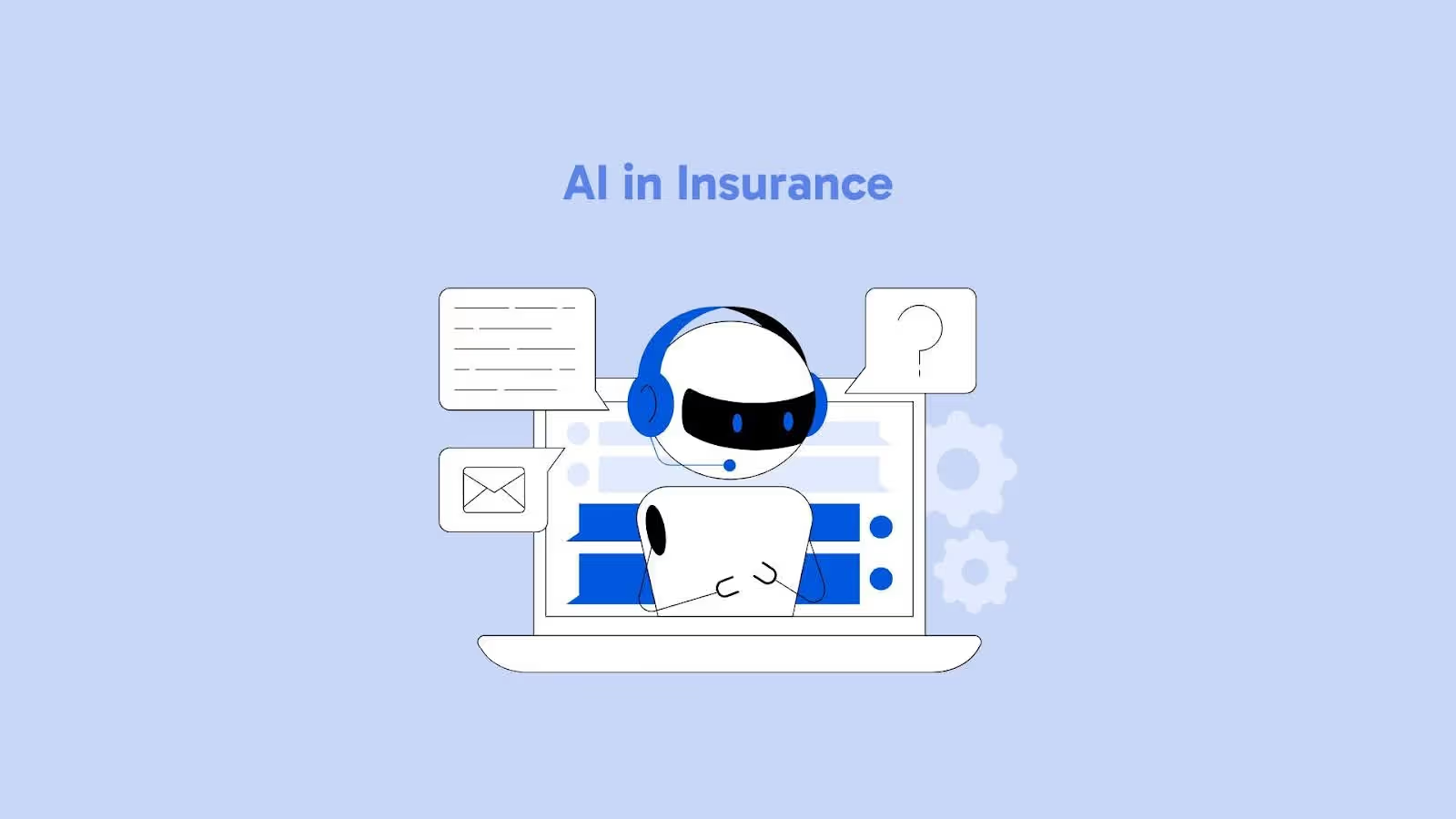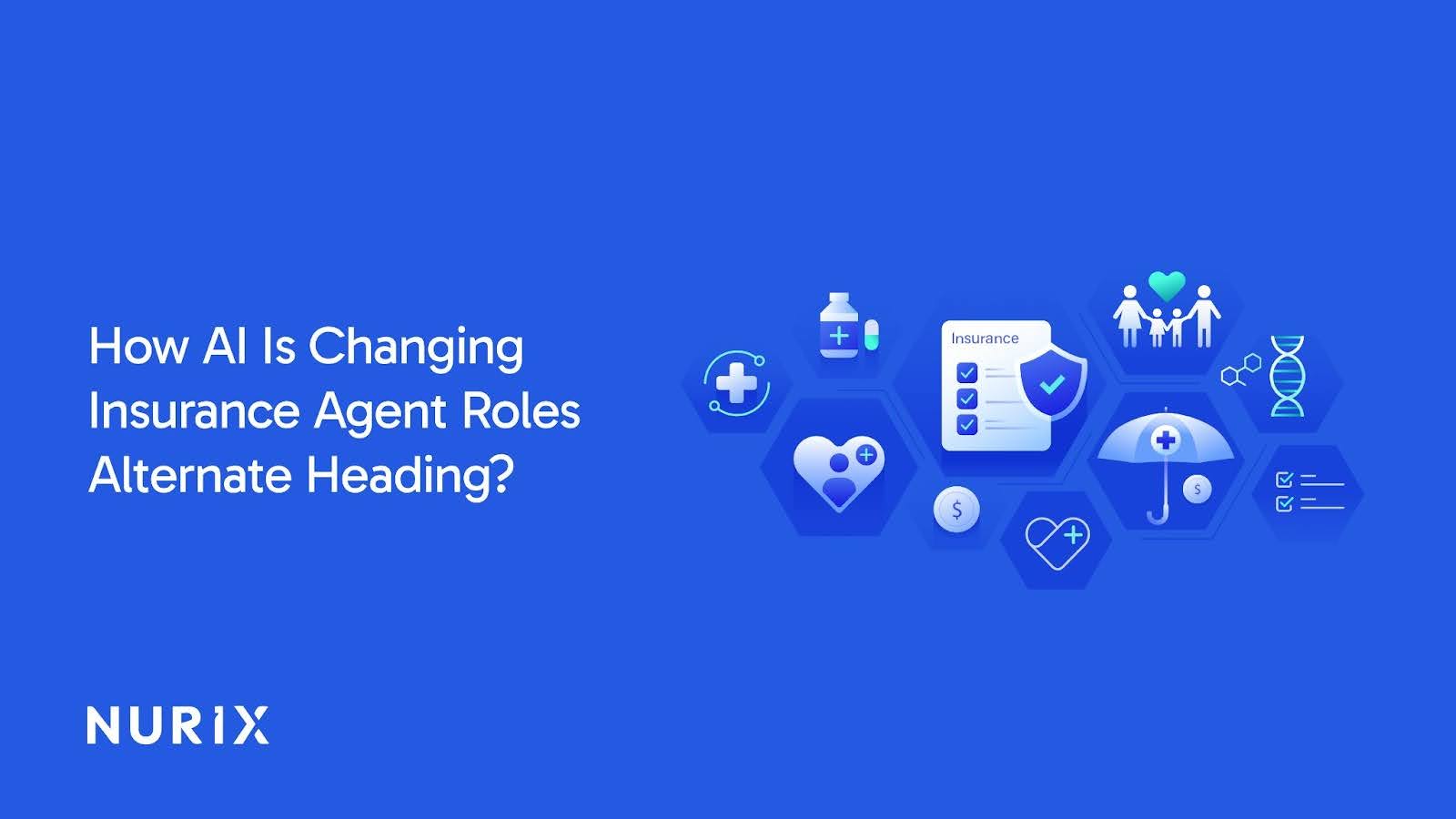What if AI could completely transform how you buy insurance by making it faster, smarter, and more personalized? Sounds exciting, right? But is AI in insurance just hype or reality?
With projections suggesting AI could revolutionize insurance by 2025, it’s clear the industry is paying attention. But is this tech actually delivering, or is it still mostly talk? Let’s dive in and find out where AI stands in the world of insurance.
The Overhyped Expectations of AI in Insurance
AI in insurance hype often promises quick fixes, like instant claims and full automation, but the reality is we’re far from those capabilities.
While AI in insurance has generated a lot of excitement, the reality is more nuanced. Let’s break down where the hype meets the real challenges
- Automation Everywhere?
Not all insurance processes can be automated. While tasks like claims verification work, automating underwriting is still far off. So, is AI in insurance hype or reality?
- Instant ROI Myths
AI in insurance doesn't deliver quick results. It requires data, testing, and ongoing improvements. Is this AI in insurance hype or reality?
- AI-Powered Customer Service
AI chatbots are great for routine queries, but they can’t replace human empathy for complex claims. Is AI in insurance hype or reality?
- Exaggerated Startup Promises
Many insurtech startups overpromise AI’s capabilities, but their lack of experience often leads to disappointing outcomes. Is this AI in insurance hype or reality?
- Human Replacement?
AI can't replace human judgment in complex claims or sensitive situations. Is AI in insurance hype or reality? Human insight is still needed.
The initial wave of AI in insurance hype created lofty expectations, but the reality is more nuanced.
This one’s worth your time: Use Cases of AI and RPA in the Insurance Industry
So, where is AI adding value to insurance? Let's explore how AI in insurance reality plays out.
The Reality: AI's Practical Applications in Insurance
Now, let’s look at the AI in insurance reality. It’s improving efficiency gradually, but not revolutionizing the entire industry overnight, yet.
- Claims Processing
AI speeds up claims for simple cases, but complex claims still require human input. It shows AI in insurance hype or reality isn’t fully realized yet.
- Fraud Detection
AI catches fraud faster, saving insurers millions by spotting patterns humans miss. This is where AI in insurance reality is making a real impact.
- Underwriting Support
AI helps underwriters analyze data more efficiently, but human judgment is still key. It’s an example of AI in insurance reality working alongside human expertise.
- Chatbots for Basic Queries
AI chatbots handle routine queries, reducing workloads. But for sensitive issues, human interaction is crucial. So, where do we stand on AI in insurance hype or reality?
- AI-Personalized Policies
AI personalizes policies based on data, but consumer trust remains a hurdle. This shows the gap between AI in insurance hype and reality.
While AI in insurance reality is more grounded than the hype suggests, it's delivering solid results in areas like fraud detection and claims processing.
Here’s a quick read: Top 7 Generative AI Use Cases in Insurance: Benefits and Challenges
However, let's dive into why AI hasn't scaled industry-wide, further distinguishing between AI in insurance hype and reality.
Significant Barriers to AI Adoption in Insurance
AI in insurance sounds promising, but it's not all smooth sailing. From data hurdles to trust issues, several obstacles still stand in the way of widespread adoption. Let’s break down what’s really holding back AI’s potential in insurance.
- Data Integration Issues: Legacy systems make it tough for insurers to integrate AI, fueling the AI in insurance hype or reality debate. Clean data is key.
- High Costs: AI implementation isn’t cheap. Insurers hesitate, balancing long-term value against the immediate cost, more fuel for the AI in insurance hype or reality question.
- Regulatory and Ethical Concerns: AI’s decision-making opacity raises regulatory and ethical issues. These hurdles are central to the AI in insurance hype or reality conversation.
- Talent Shortage: A shortage of AI talent slows adoption, making AI in insurance hype or reality a significant challenge for insurers aiming for innovation.
- Consumer Trust: Skepticism about AI-driven decisions, especially on privacy and fairness, holds back widespread adoption, keeping the AI in insurance hype or reality debate alive.
Here’s a read you’ll love: Practical Uses and Applications of AI and Machine Learning in Insurance
AI adoption in insurance is moving slower than expected, not due to a lack of potential but because of practical and regulatory challenges. Yet, there are success stories worth exploring that clarify the difference between AI in insurance hype and reality.
Real-World Examples: AI Delivering on Its Promises
Despite the debate on AI in insurance hype or reality, real-world examples show AI already delivering meaningful results in insurance.
- Customer Service Automation: Nurix AI powers automated customer support for insurance companies, handling claims status updates, policy inquiries, and even billing questions. By providing personalized, AI-driven responses, Nurix AI helps improve efficiency, reduce wait times, and ensure customers receive immediate, customized support.
- Claims Processing: Lemonade uses AI to process claims in under 3 seconds for simple cases. While human intervention is still needed for complex claims, this is a prime example of AI in insurance reality.
- Telematics in Auto Insurance: Metromile offers personalized auto insurance based on driving behavior through AI telematics, rewarding safe drivers with lower premiums calculated from actual mileage and habits.
- Underwriting Efficiency: MetLife uses AI to streamline underwriting, improving accuracy and reducing policy issuance times, showing the real impact of AI in insurance reality.
- Chatbots: AI chatbots like Geico's "Kate" effectively handle basic inquiries, freeing up human agents for more complex tasks. This is another example of AI in insurance reality.
AI in insurance reality is becoming more apparent, especially in claims processing and fraud detection areas. However, ethical concerns increase as AI continues to rise, shaping the ongoing conversation about AI in insurance hype or reality.
The Ethical Implications of AI in Insurance
With 70% of consumers concerned about AI’s fairness, insurers must address biases and transparency to ensure trust in AI’s role. Here are some of the ethical implications of AI in insurance.
- Bias in AI: AI can inherit biases from training data, leading to unfair premiums or claim rejections, fueling the AI in insurance hype or reality debate,
- Transparency: AI's opaque decision-making frustrates customers, raising concerns about fairness and trust are key questions in the AI in insurance hype or reality conversation.
- Data Privacy: With AI using personal data, concerns around how it’s collected and stored grow, adding to the debate on AI in insurance hype or reality.
- Human Empathy: AI lacks the emotional intelligence needed for sensitive claims, making it a questionable substitute for human empathy is an ongoing debate in AI in insurance hype or reality. Insurance is often emotional.
- Job Displacement: AI-driven automation may replace jobs, adding to concerns about the true impact of AI in insurance hype or reality.
Take a quick look at this: AI Adoption and Operations Cost in the Insurance Industry
Addressing these ethical concerns as AI evolves is crucial for insurers to build and maintain trust. So, what does the future hold for AI in insurance, and how does it affect the hype or reality debate about AI in insurance?
The Future of AI in Insurance: Managing Expectations
AI in insurance is on a fast track, with the market expected to grow from $4.59B in 2022 to $79.86B by 2032. But will it live up to the hype? Here’s a closer look at what’s driving the future of AI in insurance.
- Incremental Progress
AI will advance slowly in fraud detection, underwriting, and customer service, offering practical improvements over time. Is this the reality of AI in insurance?
- Collaborative Innovation
Partnerships between insurers and insurtech startups will drive AI evolution, determining whether AI in insurance hype or reality is the future.
- AI in Customer Experience
AI will enhance personalized experiences by customizing policies, assessing risks, and improving relationships. But is it AI in insurance hype or reality?
- New Regulations
As AI grows in insurance, new regulations will ensure fairness and transparency. Will these solidify AI in insurance as reality, or remain tied to the hype?
- AI and Humans Together
The future of insurance will blend AI’s data processing with human emotional intelligence. Will this balance define AI in insurance hype or reality?
Improve customer satisfaction with personalized, AI-driven responses! Nurix AI offers real-time support, context-based recommendations, and smooth integration with your existing systems to ensure each customer interaction is customized and efficient. Enhance engagement and deliver exceptional service with every conversation. Click here to know more!
AI in Insurance: Hype or Reality?
So, is AI in insurance hype or reality? It's a mix of both. While AI promises big things like automation, cost savings, personalization and more, the reality is more gradual progress. AI is already improving fraud detection and claims, but full automation of complex tasks like underwriting is still a ways off.
In short, AI is delivering, but it's more of an evolution than an overnight transformation. The future looks bright, but we're not there yet.
Conclusion
AI in insurance is far from the flashy promises we often hear, but it’s not just empty talk either. So, is AI in insurance hype or reality? The truth is, it’s a bit of both. While AI is delivering real results in areas like fraud detection and claims automation, the full transformation we expect is still unfolding.
The key will be how insurers manage expectations and use AI strategically to solve specific challenges, rather than chasing an all-encompassing solution.
Want to turn insights into action like the big players? Nurix AI gives you the tools to persuade smarter, not harder. Get ahead of the curve, start today!
FAQs About AI in Insurance Hype or Reality
1. What is AI's role in insurance?
AI enhances various insurance processes, including claims processing, underwriting, fraud detection, and customer service, improving efficiency and accuracy.
2. How does AI improve customer experience in insurance?
AI optimizes customer interactions through chatbots and virtual assistants, providing instant responses to inquiries and reducing wait times.
3. Is AI in insurance just hype?
While AI has faced skepticism, its integration into insurance is progressing, offering tangible benefits despite initial overhype.
4. What are the main benefits of AI in insurance?
Key benefits include faster claims processing, reduced operational costs, improved risk assessment, and enhanced customer satisfaction.
5. Can AI eliminate bias in underwriting?
Yes, AI can help identify and mitigate biases in underwriting decisions, promoting fairness and transparency in the insurance process.







.avif)


